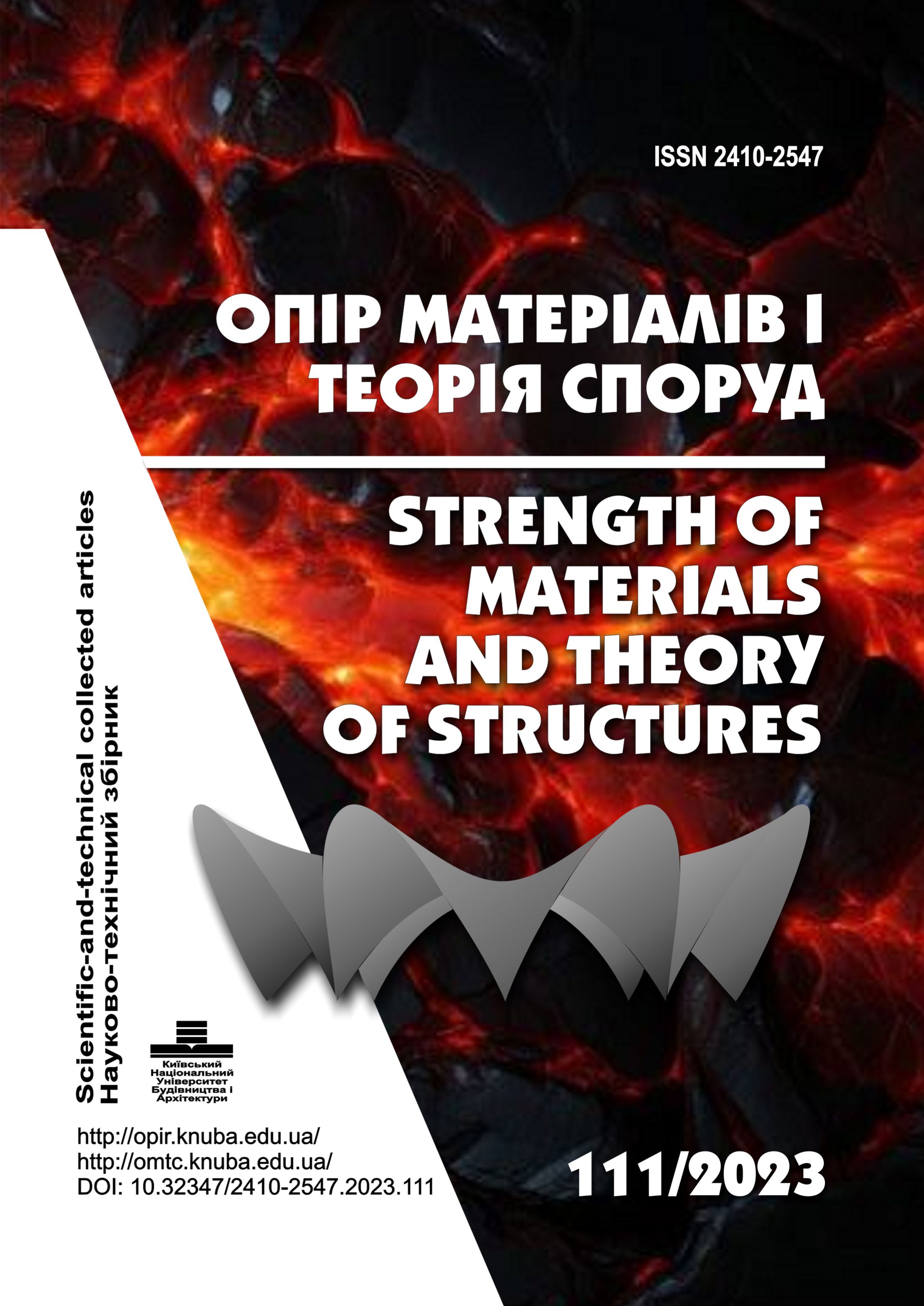The influence of noncannonical form of boundary and contact surfaces close to spherical, on the stress state of thick shells of rotation under pressure
DOI:
https://doi.org/10.32347/2410-2547.2023.111.214-222Keywords:
thick layered spherical-like noncanonical shells close to spherical, constant and variable presureAbstract
On the basis of the general solution of the equilibrium equations for an isotropic medium in a spherical coordinate system within the framework of the second variant of the method of perturbation of the shape of the boundary (MZFG), it is obtained taking into account the first three approximations of the solution of the problem of the stress-strain state (SST) of thick layered shells of rotation, limited surfaces with a small amplitude of deviation from spherical ones. According to the analytical solutions, numerical data were obtained, which made it possible to analyze the stress-strain state of the shells under the action of constant or variable axisymmetric (internal and external) pressure. Depending on the geometric parameters of the equations of the non-canonical surfaces of the shells, the effect of the conditions of ideal and non-ideal contact between the layers on the redistribution of stresses is shown compared to the case of a spherical shell with a layered structure (canonical form – zero approximation).
References
Guz’ A.N. and Yu. N. Nemish. Metod vosmuzenia formy hranica v mekhanike sploshnoi sredy (Boundary-Shape Perturbation Method in Continuum Mechanics [in Russian]) // Vyshcha Shkola, Kiev, l989. – 352 p.
Nemish Ju.N., Nemish V.N. K resheniju prostranstvennix zadach teori pruzhnosti transversalno-isotronoy sredi dla nekanonshni oblasti (Contribution on the Solution of the Elasticity Theory of a Trancverssally Isotropic Medium for Noncannonical Regions).//–Prikladna mekhanika. –1976.– 12, N 12, p.76-82.
Nemish. Yu. N. Elements of Mechanics of of Piece-Wise Homogeneous Bodies with Non- Canonical Interfaces. – Kyiv: Naukova Dumka 1989 – 312 p.
Downloads
Published
Issue
Section
License

This work is licensed under a Creative Commons Attribution 4.0 International License.
Authors retain copyright and grant the journal right of first publication with the work simultaneously licensed under a Creative Commons Attribution License that allows others to share the work with an acknowledgement of the work's authorship and initial publication in this journal.

